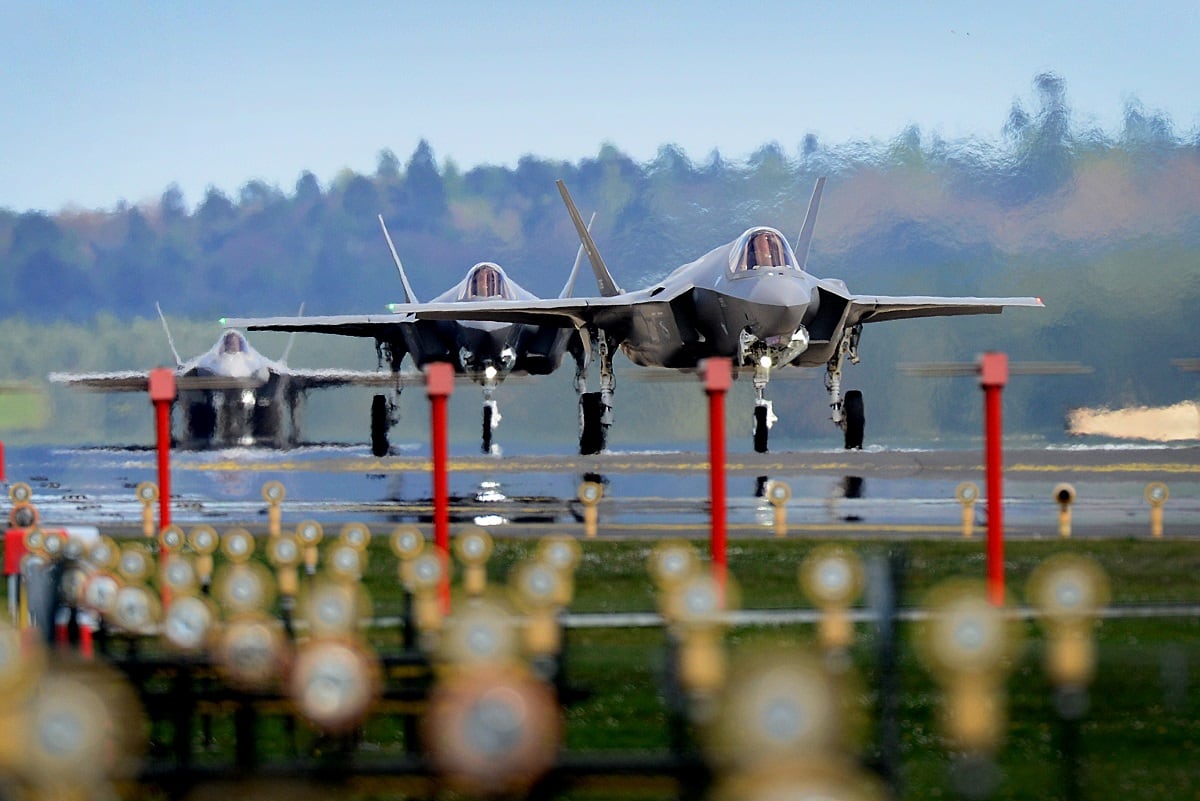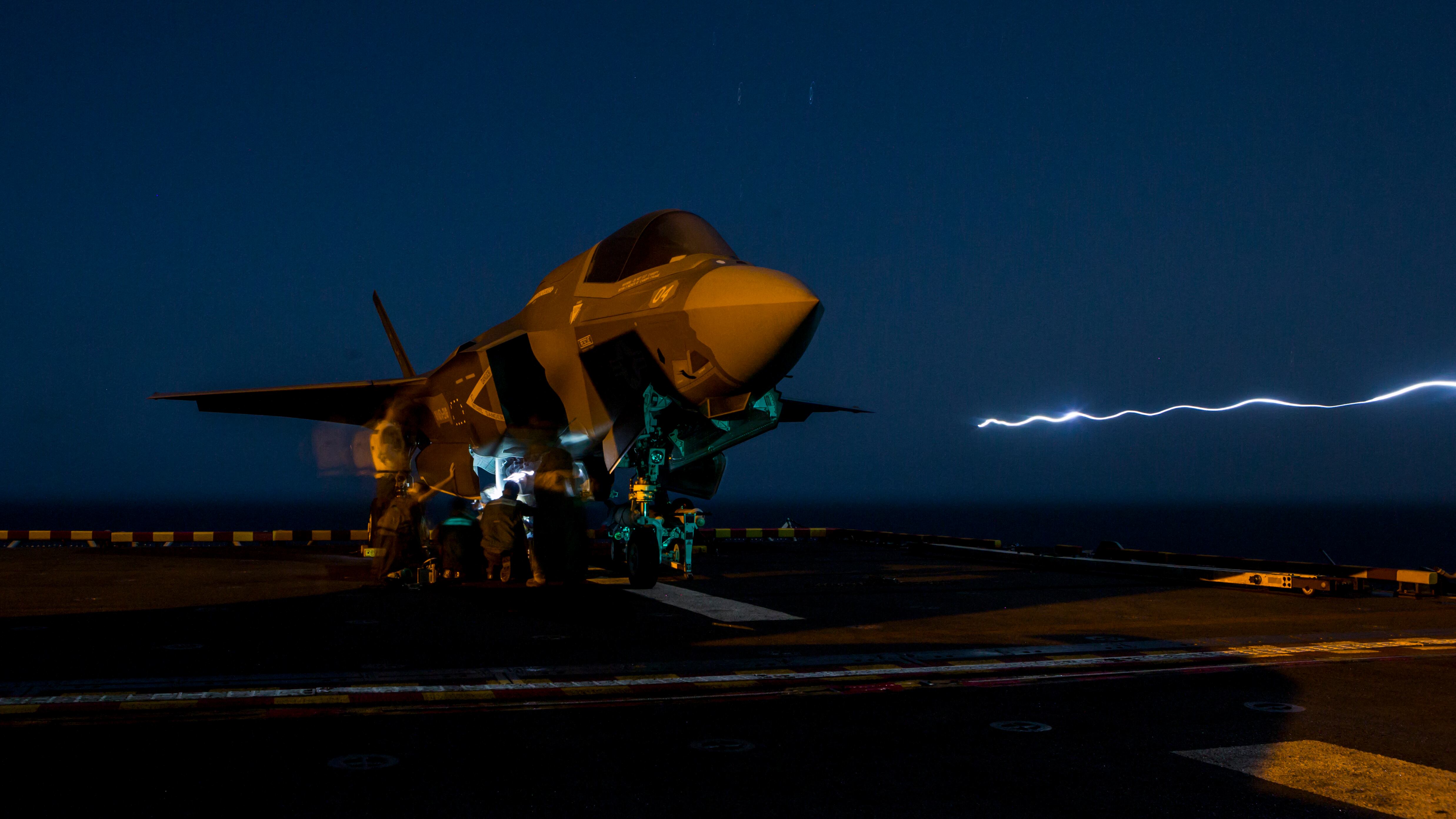WASHINGTON — The F-35 is set to move into operational testing next month — a major milestone that precedes the Pentagon’s decision on whether to begin full-rate production of the jet — but there are already signs that it may not be able to complete testing on time.
Furthermore, the F-35 joint program office is still assessing what impact a recent fleet-wide inspection of the F-35 enterprise for faulty fuel tubes will have on its Nov. 13 start date — though the JPO remains confident that it can wrap up needed repairs in time for operational tests to begin in November.
The Pentagon is aiming to wrap up initial operational test and evaluation, or IOT&E, on schedule in July 2019 despite a two-month delay in starting the tests, according to a Sept. 14 PowerPoint presentation by F-35 test director Air Force Col. Varun Puri, which Defense News obtained.
RELATED

However, it will but will have to move through test points at a rapid pace and accept additional risk in order to make that deadline, stated the document, which described the readiness of the F-35 to begin testing.
Puri’s presentation specifies a Nov. 13 target date for the F-35 to begin the formal IOT&E process.
Nov. 13 remains the projected start data “pending completion of the remaining readiness actions,” stated F-35 JPO spokesman Joe Dellavedova in response to emailed questions, although “impacts from a mandatory fuel system inspection are being assessed,” he acknowledged.
Last week, all U.S. and international F-35s were momentarily grounded to allow for a fleet-wide inspection of the jets for a defective fuel tube that was found in the Marine Corps’ investigation into a Sept. 28 F-35B crash near Marine Corps Air Station Beaufort in South Carolina.
By Monday morning, more than 80 percent of about 300 F-35s already in service had returned to flight, and about half of the impacted jets can be fixed using the existing spare parts inventory. Pratt & Whitney, which produces the F135 engine for all F-35 variants, is racing to procure more parts so that the remaining aircraft can be cleared in the coming weeks. However, questions still remain on whether Pratt or the U.S. government will be on the hook for paying for retrofits.
While a short deferment of a couple days or a couple weeks is usually not a significant barrier — and could turn out inconsequential in the F-35 program’s case — the test plan does not leave much room to absorb delays.
The Joint Strike Fighter Operational Test Team, or JOTT, still believes it can complete IOT&E by the original July 2019 goal, but only by “reducing re-fly assumptions and assuming more risk” — or in layman’s terms, lowering its estimates of how many tests it will need to redo in order to complete the test program and leaving little margin for flight cancellations due to weather or other factors.
In the “worst case scenario,” completion of operational testing could occur as late as Sept. 2019, which could add budget pressure to the program, Puri’s presentation said.
RELATED

It’s unclear what form those budget pressures would take. “IOT&E is fully funded through September, if required,” said DellaVedova, but the JPO did not respond to a question on whether additional funding would be needed if testing slipped even further, into the new fiscal year starting on Oct. 1.
When asked about the specific types of risk the Pentagon will assume in order to complete IOT&E on time, the JPO did not provide specifics, saying that it was up to the JOTT and the Pentagon’s Director of Operational Test and Evaluation to lay out the schedule.
“Operational testing will be executed in the most expeditious and efficient manner possible, while ensuring test adequacy is met, with continuous assessments of progress toward test objectives based on collected data,” DellaVedova said.
The formal IOT&E period was initially scheduled to begin Sept. 15, but was pushed back two months to allow for the delivery of the latest version of software, called 30R02.03. Robert Behler, the director of operational test and evaluation (DOT&E), said in an Aug. memo that the new software was needed to correct deficiencies with the F-35’s Air-to-Air Range Infrastructure system, which will allow testers to evaluate the jet during range-based testing.
Preliminary IOT&E activities began earlier this year, and included two ship missions against low-end threats, cold weather tests and a close-air-support assessment.
Earlier this month, the Defense Department’s top acquisition official — Ellen Lord, undersecretary of defense for acquisition and sustainment — certified that the F-35 was ready to begin IOT&E, concurring with the F-35 joint program office’s recommendation to start testing in mid-November, said her spokesman Lt. Col. Mike Andrews in a statement. The decision was made after an Oct. 2 operational test readiness review.
Currently, the Defense Department is slated to make a decision on full rate production by the end of 2019, but IOT&E activities will need to be complete before a declaration is made.
Valerie Insinna is Defense News' air warfare reporter. She previously worked the Navy/congressional beats for Defense Daily, which followed almost three years as a staff writer for National Defense Magazine. Prior to that, she worked as an editorial assistant for the Tokyo Shimbun’s Washington bureau.







